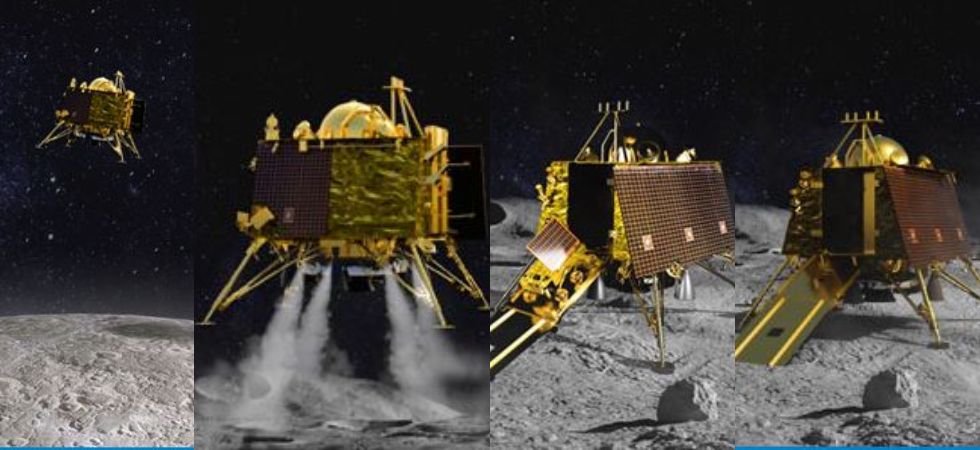New Delhi: India looks to create history by becoming the first nation to reach closest to the moon’s south pole as the Chandrayaan 2 moon mission set to land on the lunar surface at 1:55 am on Saturday.
The moon lander Vikram that separated from its orbiting mothership has already performed two manoeuvres to lower its altitude for a perfect touchdown between 1:30 am and 2:30 am on Saturday.
Inside Isro control room when Chandrayaan-2 lander lost contact | Watch visuals
CHANDRAYAAN-2 TIMELINE
AUGUST 2: ISRO’s Mission Chandrayaan-2enters Moon’s orbit
SEPTEMBER 7: 1:55 AM Vikram lands on Moon
SEPTEMBER 2: Lender Vikram separates from orbiter
SEPTEMBER 7: 5:10 AM Rover Pragyan begins to traverse Moon’s surface
The rover Pragyan will roll out from the moon lander between 5:30 am and 6:30 am, the Indian Space Research Organisation (ISRO) said. It will carry out research, includ- ing a thorough mapping of the moon’s resources, looking for the presence of water and clicking high-resolution images as well.

The space agency’s Chairman K Sivan has called Chandrayaan 2 the “most complex mission ever under- taken by ISRO”. “We’re going to land at a place where no one else has gone before. We’re confident about the soft landing. We’re waiting for tonight,” Sivan said.
DRY MASS
682kgs: ORBITER
626kgs: LANDER (VIKRAM)
27 kgs ROVER (PRAGYAN)
Prime Minister Narendra Modi and schoolchildren will see the historic landing live from the space agency’s control room.
The region where the lander Vikram is heading on the moon that is little explored till date most lunar landings have taken place in the north- ern hemisphere or in the equatorial region.

An older mission by China landed in the northernmost part, followed by Russia’s Luna missions. Most of the American lunar landings, including Apollo missions, were in the moon’s equatorial region. China currently has a rover on the dark side of the moon.
The success of the Chandrayaan 2 mission will make India the fourth country after the US, Russia and China to pull off a soft landing on the moon.
The lander Vikram and rover Pragyan’s lifespan is 14 days. After that there will be another 14 days of darkness on the area of the moon where they are, and the tem- perature could dip to minus 170 degree Celsius.
The Chandrayaan 2 orbiter’s lifes- pan is estimated at one year, but it may keep working longer. ISRO says other nations are also investing resources to reach the moon’s south pole.
The moon’s craters in the south pole have been untouched by sunlight for billions of years offering an undisturbed record of the solar system’s origins. Its permanently shadowed craters are estimated to hold nearly 100 million tons of water.
The Chandrayaan 2 lifted off from its launch pad at Andhra Pradesh’s Sriharikota on July 23 on board the giant heavy-lift rocket GSLV Mark 3.

